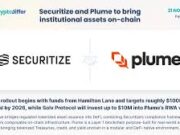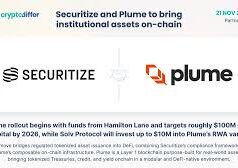In late August 2025, the crypto industry demonstrated the power of collaboration: Binance, blockchain analytics firm Chainalysis, stablecoin issuers (notably Tether), and other major players like OKX joined forces with Asia-Pacific law enforcement to freeze nearly $50 million in funds tied to one of the most insidious schemes in digital fraud—so-called “pig-butchering” scams. This operation marks a bold statement: scammers leveraging emotional manipulation and crypto’s opacity can’t operate unchallenged forever.
What Are “Pig-Butchering” Scams, Anyway?
The term may sound bizarre—and disturbing—for good reason. A “pig-butchering” scam involves grooming victims with charm, often over online dating platforms, building emotional “investment” before pouncing financially. Fraudsters coax victims into fake cryptocurrency investments, gradually “fattening” them before vanishing with their money. These scams combine elements of romance fraud, investment deception, and even human trafficking, given that some operators force fraudsters into scam factories overseas (Wikipedia, The Wall Street Journal).
In 2024, pig-butchering scams accounted for roughly 33 % of crypto fraud, growing at a whopping 40 % year-over-year (Wikipedia). Victims endure devastating financial losses—and psychological trauma—making every intervention against such schemes deeply meaningful.
The Investigation That Led to $50M Frozen
Tracking Down the Scam
Between November 2022 and July 2023, Chainalysis used its Crypto Investigations Solution to map transactions from dozens of victims in Southeast Asia. These victims had unknowingly sent funds—mostly in USDT (Tether)—to scammer-controlled wallet addresses.
Chainalysis identified 19 addresses connected to the operation, narrowed down to five final wallets holding the bulk of the illicit funds—nearly $47 million in USDT (Chainalysis, Mitrade, Cryptopolitan). The funds had traveled through a typical money-laundering pattern: victim wallets → consolidation wallet → three intermediary addresses → five final destinations (Chainalysis, Mitrade, Cryptopolitan).
A Deceptive Tactic: “Fake Returns”
In a cruel twist, scammers even sent small amounts back to victims—about $63,900 total—to feign legitimacy and lure them into investing more (Chainalysis, Mitrade). Such “returns” can lull victims into a false sense of security and deepen financial entrapment.
Freezing the Funds
Armed with precise blockchain intelligence, investigators approached APAC law enforcement in June 2024, requesting that stablecoin issuers freeze the illicit USDT balances. Using its controllability—a feature unique to centralized stablecoins—Tether froze around $46.9 million, effectively immobilizing the criminals’ access to their loot (Mitrade, Chainalysis, Cryptopolitan, The Block).
The Players in the Enforcement
This takedown was powered by a coalition: Binance (one of the world’s largest crypto exchanges), Chainalysis, Tether, OKX, and APAC law enforcement. The cooperation seamlessly united private-sector technical capacity with law enforcement jurisdictional authority (Cryptopolitan, Mitrade, Chainalysis, Binance, Cybernews, The Block).
Why This Matters
1. Demonstrates the Strength of Public-Private Cooperation
Every voice within the crypto ecosystem—exchanges, analytics firms, stablecoin issuers, and law enforcement—played a vital role. As Erin Fracolli, Binance’s Global Head of Intelligence and Investigations, put it, these efforts underscore “the essential role of public-private partnerships in subverting criminal operations and working toward compensating victims” (Binance).
2. Highlights the Power of Blockchain Transparency
Though crypto’s pseudonymity is often abused, it also provides unparalleled traceability. Through data patterns and wallet mapping, Chainalysis and others can follow the money in real time—making these scams traceable and actionable (Chainalysis, Binance).
3. Adds to a Growing Trend of Successful Freezes
This freeze is part of a larger wave: earlier operations saw Tether, OKX, and the U.S. Department of Justice freeze $225 million in USDT in 2023—the largest ever by the U.S. Secret Service (Chainalysis, Mitrade, Cryptopolitan, Binance). Meanwhile, broader initiatives like the T3 FCU—including TRON, Tether, TRM Labs, and Binance—have frozen over $250 million globally in their first year, targeting pig-butchering and romance scams (TechRadar).
Challenges That Remain
Frozen ≠ Recovered
Freezing funds is a critical first step—but recovering them is more complex. Victims often need legal processes to retrieve their money. Banking regulations, the anonymity of crypto, and cross-border hurdles can hinder restitution (TechRadar).
Scam Evolution and Scale
Pig-butchering scams are evolving. Chains of intermediaries, trafficking of scam workers, and encrypted scam operations challenge investigators. These frauds continue to drain billions globally each year (The Wall Street Journal, Financial Times, Wikipedia).
Global Coordination Is Key—and Still Lacking
Though successes are increasing, global enforcement remains fragmented. Many scam operations run from jurisdictions with weak law enforcement or high corruption. Without synchronized international action, fraudsters retain safe havens (The Wall Street Journal, Wikipedia).
What This Means for Users, Regulators, and Crypto
- For Users: Report suspicious solicitations early. Avoid investment opportunities from people you don’t know intimately. Conduct due diligence, verify identities, and report scams promptly.
- For Exchanges & Stablecoin Issuers: Continue investing in intelligence, red-flag monitoring, and compliance. The ability to freeze assets is a powerful tool—use it responsibly.
- For Regulators & Law Enforcement: Expand digital forensic capabilities, foster cross-border collaboration, and streamline victim restitution mechanisms. Speed and coordination are paramount.
- For Crypto’s Reputation: These successful freezes counter the “crypto equals crime” narrative. They show that the ecosystem can self-regulate and partners with law enforcement to protect users.
Final Thoughts
The freezing of nearly $50 million in pig-butchering scam proceeds isn’t just a numerical headline—it’s a beacon of hope for fraud victims and a warning to criminals. Through decentralized traceability, centralized controls, and cooperative frameworks, the crypto industry proved it can protect users in real time.
But justice still awaits. Recovering those funds, prosecuting the perpetrators, and dismantling scam networks require sustained effort. The momentum is growing—and if crypto, regulators, and users continue to collaborate, we may begin to see a real dent in the profitability of these frauds.
Let this case serve as both reassurance and rallying cry: where there is transparency and cooperation, even the most opaque scams can be brought to light—and frozen in their tracks.
Sources & Further Reading
- ForkLog: “Binance Aids in Freezing $47 Million in Fraudulent Assets” (ForkLog)
- Binance official blog: “Binance Supports $47 Million Freeze in APAC Pig Butchering Scam Investigation” / “Binance and Partners Freeze $50 Million in Illicit Funds from Scams” (Binance, X (formerly Twitter))
- Mitrade / Cryptopolitan: details on Chainalysis, Binance, Tether, OKX freezing ~$46.9 million (Mitrade, Cryptopolitan)
- Cybernews: summary of nearly $50 million frozen (Cybernews)
- Chainalysis blog: breakdown of tracking and freezing operation (Chainalysis)
- The Block / Blockchain Reporter: additional context and quotes (blockchainreporter)
- InfoSecurity Magazine / Cryptodnes: overviews (Infosecurity Magazine, CryptoDnes.bg)
- TechRadar news: broader trend—T3 FCU and over $250 million frozen annually (TechRadar)
- Wall Street Journal / other sources: pig-butchering scam background, human trafficking angle and recovery challenges (The Wall Street Journal, Financial Times)
- Wikipedia overview of pig-butchering scams and statistics (Wikipedia)




























Using Chainalysis tools and stablecoin freezes is a powerful countermeasure
Almost $50 million frozen in APAC crypto is more than trading
Binance, Chainalysis, law enforcement, and Tether deserve credit.
Pig butchering’ scams are so insidious
Hats off to the public-private collaboration that traced the funds and stopped the thieves in their tracks
Seeing Binance and Chainalysis teaming up to freeze nearly $50 million is huge
They’re building trust only to betray it later
It’s reassuring that blockchain transparency can actually protect victims, not just serve speculators